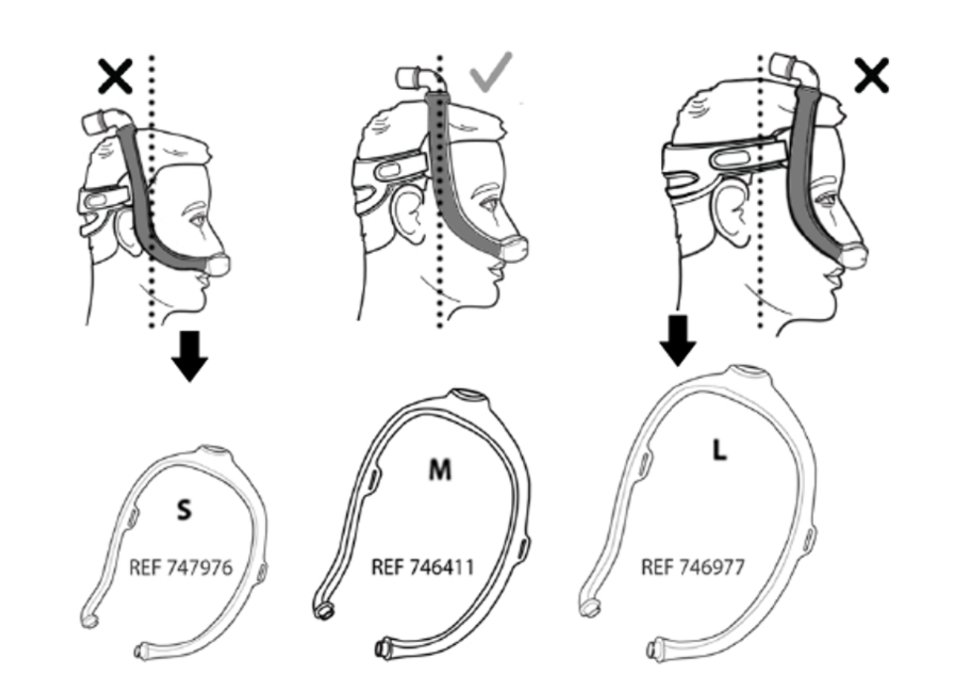
Continuous Positive Airway Pressure (CPAP) machines are medical devices that help people with sleep apnea breathe more easily during sleep. Sleep apnea occurs when the muscles in the upper throat relax enough to close the airway and momentarily interrupt sleep. This condition results in daytime fatigue and greatly increases the risk of developing type 2 diabetes, high blood pressure, and liver disease. CPAP machines deliver a stream of air through a mask to maintain a positive pressure that keeps the airway from closing.
Philips developed their DreamWear Nasal CPAP Mask to provide a more comfortable and effective alternative to traditional CPAP masks. However, because it is worn differently from other masks, patient trials revealed that many people couldn’t understand how to wear and fit the mask. Daedalus was asked to understand the problem, redesign the fitting instructions, and test the new instructions for usability and patient satisfaction. We redesigned the instructions for use to better demonstrate how the mask was intended to be worn and to clarify best practices for adjusting the mask to the wearer’s face. We also created a one-page Quick Start Guide, enabling users to interact with and familiarize themselves with the device more readily. Once the redesign was completed, we conducted formative usability testing with a small number of CPAP users, leading to minor revisions. Subsequent summative testing with 30+ novice and experienced CPAP users ultimately determined the acceptability of the revised Quick Start Guide and instructions for use for DreamWear Nasal. The new and improved fitting instructions reduced user frustration with the unfamiliar configuration, allowing them to more quickly enjoy the more comfortable and effective mask.